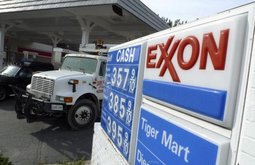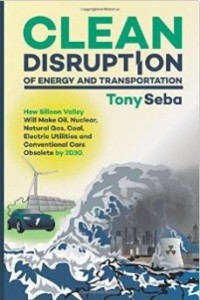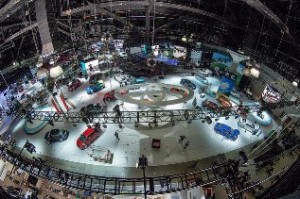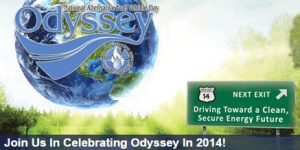by Jon LeSage, editor and publisher, Green Auto Market
Here’s my take on the 10 most significant and interesting occurrences during the past week…….
 Tesla Motors is masterful at getting people to impatiently wait for the electric carmaker to unveil a new technology. The “D” model announced on Thursday wasn’t a new electric car, but an all-wheel drive version of the Model S that will roll out in 2015. It will offer a semi-autonomous driving system that it calls Autopilot. Cameras and infrared sensors read speed limit signs and the speed of cars around the Model S; it also features collision avoidance and lane-keeping assist systems. Drivers can change lanes simply by switching on the turn signal. Tesla says Autopilot is able to park the car once you leave it. The Model S 85D will have 295 miles of range compared to 261 for the ordinary Model S, and it will be more energy efficient than previous versions of the Model S. “A system like this is inherently able to achieve better road holding,” Tesla CEO Elon Musk wrote in the company’s blog. “We were able to improve almost everything about the car.” Some media and stock market analysts found the hyped announcement to be overinflated; others have been fascinated.
Tesla Motors is masterful at getting people to impatiently wait for the electric carmaker to unveil a new technology. The “D” model announced on Thursday wasn’t a new electric car, but an all-wheel drive version of the Model S that will roll out in 2015. It will offer a semi-autonomous driving system that it calls Autopilot. Cameras and infrared sensors read speed limit signs and the speed of cars around the Model S; it also features collision avoidance and lane-keeping assist systems. Drivers can change lanes simply by switching on the turn signal. Tesla says Autopilot is able to park the car once you leave it. The Model S 85D will have 295 miles of range compared to 261 for the ordinary Model S, and it will be more energy efficient than previous versions of the Model S. “A system like this is inherently able to achieve better road holding,” Tesla CEO Elon Musk wrote in the company’s blog. “We were able to improve almost everything about the car.” Some media and stock market analysts found the hyped announcement to be overinflated; others have been fascinated.- More DOE funding rolling out. As part of its $25 billion Advanced Technology Vehicle Manufacturing (ATVM) low-interest loan program, the US Department of Energy may soon be awarding new loans. These new loans will probably go to parts suppliers and not OEMs, with one or two awards expected to be announced this year. Lighter-weight materials for fuel efficiency, such as aluminum alloy, may be part of the low-interest loans. There have been no new ATVM loans since late 2011, with more than $15 billion remaining in the coffer.
- Another plug-in hybrid Cadillac. Cadillac will debut a plug-in hybrid version of its CT6 large sedan late next year, according to product chief Mark Reuss. It will get at least 70 mpg. The next CT6 will have a wide range of advanced technologies available – a six-cylinder turbocharged engine that goes up to 400 hp, a stop-start system, and an eight-speed automatic transmission. Lightweight construction will also help fuel economy, Reuss said – it’s going to be eight inches longer and 53 pounds lighter than the Cadillac CTS. Cadillac also has a battery electric sedan in the planning stages.
- Green vehicle awards increasing even more. As reported in Green Auto Market two weeks ago, annual green vehicle awards are getting a bit more confusing. Along with Bobit Business Media adding the Green Fleet Car and Truck of the Year Awards during Connected Car Expo at the LA Auto Show, the annual Green Car of the Year award will be announced that same day by Green Car Journal. That magazine has started up another contest – the Green Truck of the Year award, which will be presented at the 2014 San Antonio Auto & Truck Show on November 6. The five nominated 2015 model pickups include the Chevrolet Colorado, Ford F-150, GMC Canyon, Ram 1500 EcoDiesel, and Ram 1500 HFE. “The significant efficiency and environmental improvements being made in the truck segment signal an important change in the industry,” said Ron Cogan, publisher of Green Car Journal and CarsOfChange.com. Maybe Green Auto Market should start its own award? Green Vehicle Innovations of the Year Award, or something like that?
- New NGVA leader takes the helm. Natural Gas Vehicles for America has named Matthew Godlewski its new president. Godlewski succeeds Rich Kolodziej, who served as NGVAmerica’s president since 1996. Godlewski is an experienced trade association executive who has a proven ability to lead effective teams and collaborate with industry allies, said Ron Eickelman, chairman of NGVAmerica and president of Agility Fuel Systems. Statements of support have been released by a few colleagues, including Mitch Bainwol, president and CEO of Alliance of Automobile Manufacturers (where Godlewski had served in a leadership role), Andrew Littlefair, president and CEO of Clean Energy Fuels, Scott Perry, VP of supply management for Ryder Fleet Management Solutions, and Gordon Exel, president of Cummins Wesport.
- Tesla Motors has opened up in a tough-to-enter market. Tesla Motors has opened up a retail store in a country that usually doesn’t allow outside automakers to sell domestically – Japan. Last month, Tesla CEO Elon Musk handed over keys to several new Model S owners during a ceremony in Tokyo. Musk praised Japanese electronics company Panasonic for supplying the battery pack in the Model S. One of these cars was delivered to Yoshi Yamada, a Panasonic executive vice president; Yamada said the Model S is only being taken for company use.
- Zero emission buses had two major announcements. CALSTART has been given approval by the Federal Transit Administration to develop North America’s first-ever fuel cell/battery combination zero emission 60-foot electric bus. The bus will be built by New Flyer Industries, and it will be designed to provide daily urban service using a unique combination of fuel cell and batteries. The propulsion system will include a combination of batteries, a fuel cell, and hydrogen storage. The bus is expected to be completed in the middle of next year……… China-based BYD says it will unveil the world’s first pure battery electric 60-foot transit bus at the APTA Expo in Houston this month. The company said that representatives of major transit agencies have visited BYD’s factory in Lancaster, Calif., to see the electric bus.
- SolarCity and Honda investing in solar power. During the SXSW Eco conference in Austin, Texas, SolarCity and Honda renewed their partnership with a new fund expected to finance $50 million in solar projects. The idea is to make solar more affordable and available to Honda and Acura customers and dealerships in the US. This fund is a follow-up to a $65 million fund the two companies created in 2013. They’ve completed their first wave of solar projects for homeowners, dealerships, and corporate facilities that now produces more than 12.5 MW of solar generation capacity.
- Fuel economy pace slows down. The US Environmental Protection Agency (EPA) released its annual Fuel Economy Trends report. Average fuel economy increased to a record 24.1 mpg in the 2013 model year, a pace that slowed down compared to the two previous years. It saw a 0.5 mpg increase from the previous year, while the 2012 result had improved 1.2 mpg from the prior year. It’s expected to slow down even more – to just a 0.1 mpg increase for the 2014 model year. Federal regulators say – not to worry. They expect the pace to go back up as more powerful gasoline-saving technologies enter the market.
- Give renewable natural gas the recognition it deserves. Joanna Underwood, president of Energy Vision, just had commentary pieces published in Triple Pundit and GreenBiz. Turning biogases into fuel has a dramatic impact. Fleets converting from diesel to renewable natural gas cut greenhouse gas emissions by 88% or higher. This exceeds U.S. goals of a 20% reduction by 2020 and an 80% reduction by 2050, Underwood wrote.




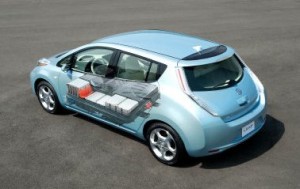


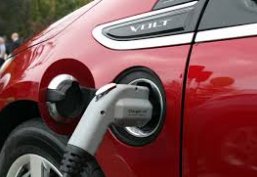
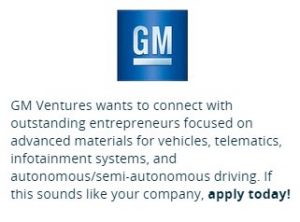 way i3 works
way i3 works